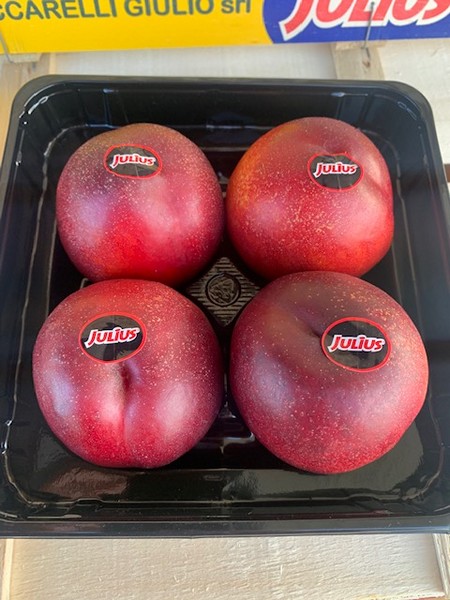Now that the harvest of early stone fruit varieties in May and June has been completed in the north of Italy, we asked Ettore Ceccarelli of the Julius company (Ceccarelli Giulio) to provide a first assessment of the situation and what to expect for the next two months.
Freshplaza (FP): What is your opinion on the stone fruit market now that the harvest of early varieties is over in the north of Italy? Ettore Ceccarelli (EC): Back in April, all the attention was on the freezing temperatures, with frosts that destroyed the entire production, but we have realized that this was not the case. Those who were affected by the the cold had no production, but in those areas not affected by severe frosts like Portugal, southern Spain, Sicily, Basilicata, Campania, the yield was high. Due to the sudden changes in temperature and the lack of pruning, the fruit grew at a modest size, especially peaches and nectarines.

FP: What is your point of view here? EC: The reduced sweetness of the fruit, both in the south and in the north, is not the result of farming, but of the sudden ripening induced by the heat. This means that low consumption (as is also happening with other popular products such as cherries, melons and watermelons) is really worrying. Our partners from the national markets have reported that sales are very slow, sometimes without understanding the reason. At first, it was because it was too cold, then it became too hot, then it was because of a low sweetness of the fruit, then because of a lack of money. The truth is that crops are arriving from too many places and in no particular order. Certainly, the low sales are not due to the wholesale prices in the period mentioned above, because after the initial excitement at the end of May, we fell 20 cents below the 2020 prices.
 Ettore Ceccarelli
Ettore Ceccarelli
FP: How do you feel about the huge number of apricot varieties being harvested all at the same time? EC: This depends on the lack of cold weather in January/March, and we can’t do anything about that, but what puzzles me is why the markets appreciate one variety in the early period, maybe two in the middle period, and one/two now, despite the dozens of cultivars available. Of these varieties, two are secular cultivars, one is comparatively recent, and one is very recent. Perhaps all this varietal improvement has not taken place in taste, but only in appearance?


FP: How are foreign sales going? What are your main destinations? EC: Germany, Sweden, Norway and Austria are the main destinations abroad, but we have customers all over Europe. With regard to sales, we had negative feedback in May and June, especially for volumes and prices. I have the feeling that, by dint of talking about the devastating frosts, the big retail chains have agreed more supply contracts with Spain, Greece and Portugal.
FP: How would you rate the current season? EC: It has been very difficult so far. We have not had an economically satisfactory response to the sales and the producers have not achieved the desired prices. However, we have to look ahead to the varieties of peaches and nectarines (as well as apricots) of July and August, which are important in terms of size and flavor, hoping that with the help of the warm weather (which has stabilized and slowed down the ripening of the fruit on the trees), and the arrival of tourists, there will be greater consumption of summer fruits.


